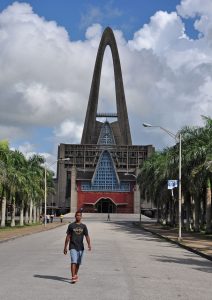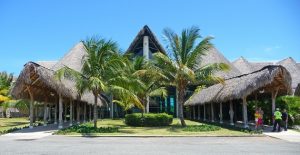
By Bob Schulman
Check out a map of the Caribbean, and you’ll spot the island of Hispaniola about 650 miles southeast of Miami, wedged in between Cuba and Puerto Rico. Two countries share the island, the Dominican Republic on its eastern two-thirds and Haiti on the western third.
Foreigners have been coming to the Dominican Republic for over 500 years, at first on the rickety caravels of Christopher Columbus and today on jets from around the world. Vacationing in the D.R. (as the locals call their country) has become so popular that the island nation has become the Caribbean’s No. 1 tourism destination.
There are a half-dozen major resort areas around the D.R., the largest being an 80-mile strip of sugary white beaches called Punta Cana-Bavaro running along the eastern shores of the island. Most of the gorgeous resort-hotels dotting the beaches have the same brands – Barcelo, Dreams, Secrets, Melia, Iberostar and Riu to name just a few – you’ll find at Cancun, the Riviera Maya, Puerto Vallarta and Los Cabos among Mexico’s top resorts.

There’s only one main city in the Punta Cana-Bavaro area, and chances are you never heard of it. But seeing it – and in particular its unusual basilica – is well worth an hour’s ride inland on local buses. It’s called Higüey, and by some accounts it was settled by Spanish troops in 1494, which would make it the oldest colonial city in the Western Hemisphere. Its name, taken from a local Taino Indian word, means “the place where the sun’s rays first shine each day.”
The D.R.’s homies tell all kinds of stories about the basilica. In one popular version, the Tainos were less than excited about giving up their sun-lit city to Columbus and his soldiers, and were about to send them packing – the hard way – into history. Surrounded, the invaders tried one last defense: They put a large cross in the path of the attackers. Miraculously, the cross glowed with an image of the Virgin Mary, which sent the Tainos packing instead.

The victorious conquistadores built a church on the site, then went on to name the surrounding area La Senora de la Altagracia (Our Lady of the Highest Grace), with Higüey as its capital.
Fast forward to 1922, when La Senora de la Altagracia became the patron saint of the whole D.R., and then to 1954, when work got underway on the current basilica. It took 18 years, but when it was finished, its 260-foot-high arch – said to represent hands at prayer – helped put modern-day Higüey on the map. There are things to write home about inside the basilica, too. Besides ornate religious items, a display in the basilica’s sanctuary spotlights a famous 15th century painting of – you guessed it – La Virgen de la Altagracia.
Visitors should know that Higüey is a fairly large city with perhaps 150,000 people living there and seemingly the same number of two-person motoconcho (motorbike) cabs buzzing around in the absence of buses and regular taxis. Hailing one down is easy, except on Jan. 21 of each year. That’s the D.R.’s national holiday of the Virgen de la Altagracia, and the town is flooded by tens of thousands of pilgrims, all headed to the basilica.
